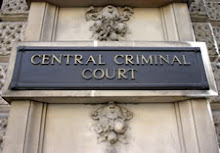When hanging was too good for some
| By Rob Liddle BBC News |
| Before newspapers, the Proceedings were widely read by the public |
In August 1761 one of my ancestors found himself stuck inside a notorious debtors' prison in London at the suit of his in-laws.
Until I found this out, Robert Sammon was little more to me than a named link in the chain that ends with my children.
But armed with this nugget I am able to picture him amid the squalor of the lice-ridden Poultry Compter, and, although no more details of his own case seem to exist, I can begin to wonder how the Chelsea baker got himself into such a fix.
Thousands of such "ordinary" people in extraordinary situations can be discovered among the records of the Proceedings of the Old Bailey, which have been published online and cover trials for the years 1674 to 1913.
The newly expanded site claims to provide access to the largest single source of searchable information about ordinary British lives and behaviour ever published.
Cow-worrying
Horror, tragedy, pathos and comedy are all represented in the details of these historical crimes and punishments. OLD BAILEY HISTORY Officially called the Central Criminal Court, nickname the Old Bailey comes from street where it is located, which follows the original fortified wall of the city, known as the "bailey" Building that houses the current courthouse dates from 1907 Court has hosted thenotorious trials of Dr Crippen, Ruth Ellis and Peter Sutcliffe |
Yet while I'm looking for connections, if I found a link to Stephen Comber, accused in 1850 of "unlawfully laying his hands on a cow with intent", I reckon I would keep quiet about it.
Some of the crimes outlined in the trial summaries you just don't see anymore - publishing pamphlets encouraging the assassination of a Russian emperor, abandoning someone in New Zealand during a voyage and stealing and manning a ship for use in the slave trade.
And Albert Feist, master of Newington workhouse - accused in 1858 of stealing bodies he was supposed to have had buried and selling them to a hospital for dissection - seems to have come straight out of the pages of Dickens.
The Victorian age was the heyday of the poisoners, and many misusers of arsenic and strychnine ended up before the judges. More than 1,500 alleged bigamists also found themselves in the dock during the 1800s.
Burnt to death
Other crimes are more familiar today, but have their own slant. In 1853 Richard Pardenton and Joseph Woods were accused of dangerous driving, in operating a railway engine in an "incautious" manner. | |
The changing attitudes to punishment and rehabilitation are apparent from the records, with hanging being literally too good for you if you were caught clipping the edges off silver coins in the 17th Century.
Ann Petty of Holborn turned to this crime after her husband hanged himself. Found guilty, she was sentenced to be drawn on a hurdle to Smithfield and "there to be burnt to death".
Even in the 19th Century, what might now be regarded as commonplace offences were met with the full weight of the judicial system.
In 1835 John Alberson was indicted for breaking into the Lambeth home of his former employer, stealing coats, trousers, waistcoats and handkerchief, a pair of gloves and a memorandum book.
Found guilty of burglary, he was sentenced to death - at the age of just 13.
Atlas of crime
Other tales of desperation and poverty abound. In 1853 Thomas Bedford was found guilty of abandoning and deserting his six-week-old son on a doorstep, and in 1888 destitute single mother Emma Aston killed her two baby children in the bedroom of an East End house. Although convicted of the murder, she was judged not be sane at the time of the crime and sent to hospital.
| TRIAL TOTALS 1674-1913 Animal theft 4,230 Highway robbery 4,169 Murder 2,650 Bigamy 2,380 Rape 2,018 Keeping a brothel 183 Performing illegal abortions 131 Piracy 7 |
The Proceedings were regularly published accounts of the court's business, produced shortly after the conclusion of each session.
They were inexpensive, and, targeted initially at a popular audience, they became a commercial success.
But with the growth of newspapers and increasing publication costs the audience dwindled to a combination of lawyers and public officials. Publication ended in April 1913.
One of the highlights of the website is the ability to search for crimes, criminals and locations mentioned in trails via an interactive map of the capital.
As well as finding the Paddington streets of my Victorian forebears well represented in the annals, I see that my local pub features twice.
It's a fascinating connection with history, but be warned if you are going to look - you might just find out why that three-bedroomed terraced house turned out to be such a bargain after all.

No comments:
Post a Comment